The most obvious living things on the Nature Trail at this time of year are the trees. The woodland here looks like it has been here for ages, but it hasn’t. In fact, nearly all of it has grown up since the ground was cleared as the railway embankment was built in 1863.
A few old oaks were left standing, so some of the oaks on the Trail now may be direct descendants of trees here before the railway came. After the railway was built, new trees sprung up on the cleared banks; silver birch and hawthorn, sycamore and ash.
The railway company planted horse chestnuts, poplars and limes. I like to think that some of the fruit trees may have sprouted from a cherry stone, or apple core thrown casually out of a train window by a child on the way back to Nunhead after a day out at Crystal Palace!
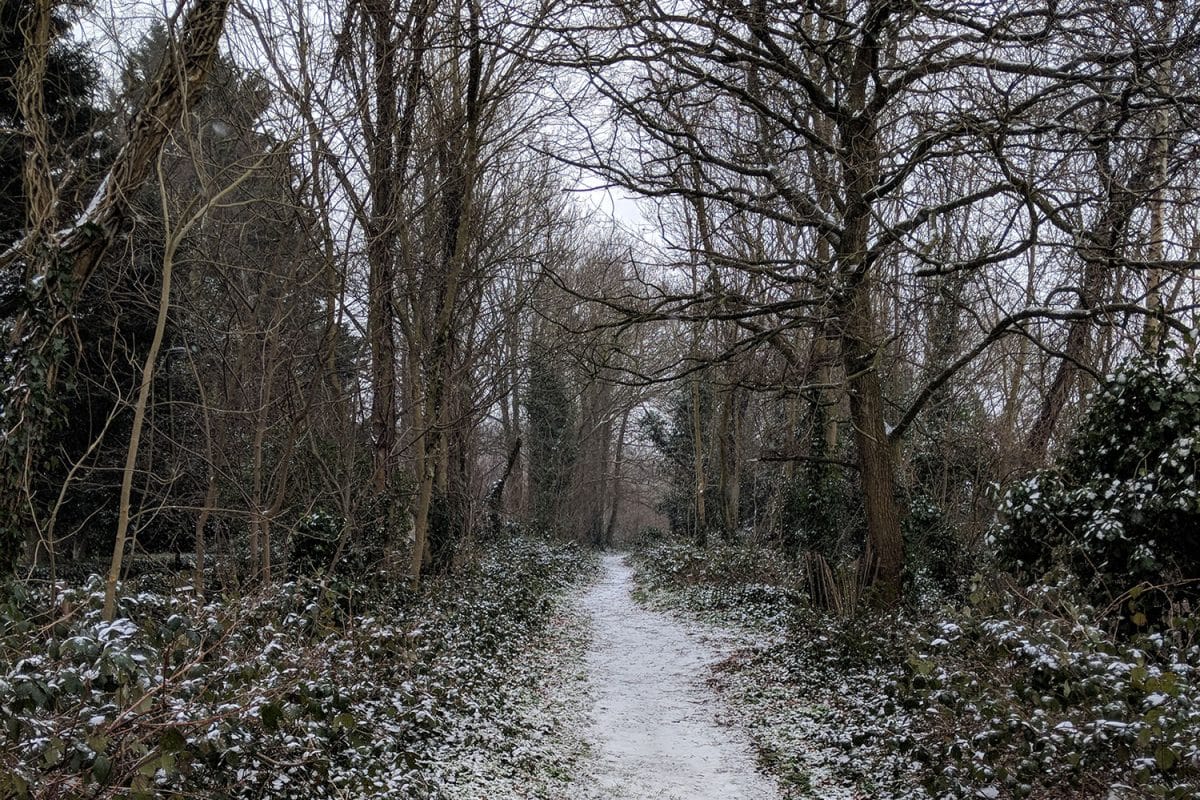
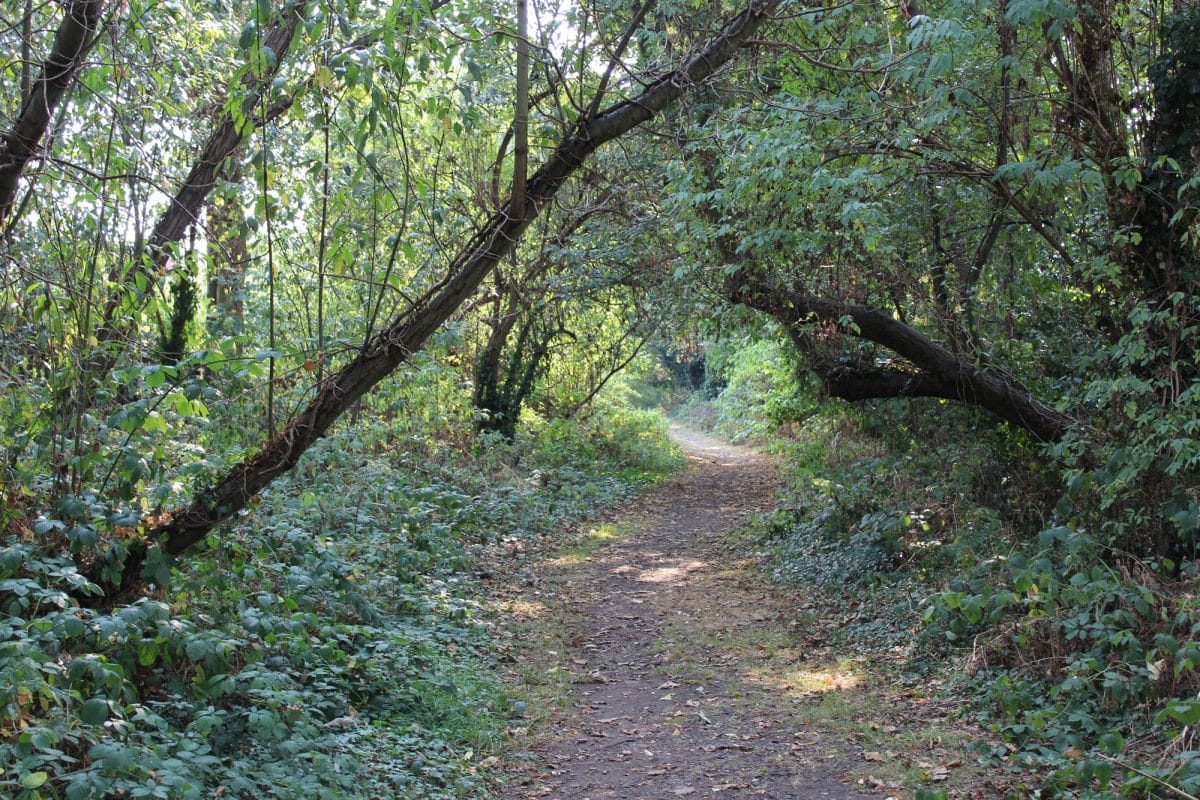
When the disused railway line became a Nature Trail in 1973, whitebeam, beech, and hornbeam were planted. And since then the trail’s flora has been enriched by garden shrubs and trees, which have seeded from trees and shrubs in the adjoining gardens; like snowberry, privet, roses, and cherry laurel.
I don’t know about you but I find it harder to identify trees than I think it will be. It’s even more complicated in urban spaces like the Horniman Nature Trail where you have all the garden ones to worry about.
So how do you get to grips with trees? Winter is the perfect time to learn tree ID, with no fruits leaves and flowers to complicate matters. And the nature trail, and adjoining park, are very pleasant places to start. Here are some tips.
Doing your homework
To start with don’t worry about all the garden shrubs, fruit trees and oddities. Also do not fret over complicated groups like the elms, or whitebeams. Keep it simple!
Start by doing a little bit of homework on six or so common trees you are likely to see on the Nature Trail, or near wherever you live. Instead of reading long descriptions in books it is better to skim through a couple of short articles on how to identify your chosen common trees. Just get yourself familiar with those half a dozen for the moment.
Here is a good blog from the Natural History Museum on Five Common Urban Trees. It has photographs of the leaves, bark, flowers and seeds of these five trees, all of which can be found on the Trail or adjoining Horniman Gardens.
- London plane (Platanus X hispanica), is a really common street tree, especially in London, as the name suggests. Look on the London Road outside the Nature Trail entrance.
- Sycamore (Acer pseudoplatanus). Introduced as a garden tree in the sixteenth century, and abundant in city parks and gardens. There are several large specimens and lots of saplings on the Trail.
- English Oak (Quercus robur). And while you’re at it you might as well do Sessile Oak (Quercus petraea). Both are common on the Trail and sessile oak is a key species in nearby Sydenham Hill Wood.
- Silver birch (Betula pendula). You probably know this one already, too. Birch is a ‘pioneer’ tree, which fares better in open land than established woodland. You will notice that most of the birch trees on the Nature Trail are dead or dying, for this reason.
- Horse Chestnut (Aesculus hippocastanum). Another sixteenth-century introduction, and a popular tree in parks, gardens, streets. These are on the Nature Trail, and are common in parks and gardens in London.
If you know one or two of these already, why not add a couple of others, say beech, and ash, or hawthorn. You choose!
After you’ve read that Natural History Museum article or something similar, find a short video on YouTube, like this one from the Wildcraft series. I’ve chosen this one as it focuses on ID in the winter, which will supplement the information from the other article. Also, at the moment on the Nature Trail, most of the trees are leafless. Fewer leaves and no fruits or flowers can actually make things simpler.
Then, while the knowledge is fresh in your mind, go out for a walk on the Trail and find a tree or two.
What can buds tell you
Here’s something else to help you. Buds are a key feature to look for in winter when identifying trees.
Buds on some trees are paired, also known as opposite, which means they grow from different sides of the branch (or stem) but at the same distance along the stem. It is much easier to show this in a picture (see below).
Only six native UK types of deciduous tree have paired buds. These are
- Maple, including field maple (Acer campestre) and the related sycamore (Acer pseudoplatanus)
- Ash (Fraxinus excelsior)
- Spindle (Euonymus europaeus)
- Horse chestnut (Aesculus hippocastanum)
- Elder (Sambuca nigra)
- Dogwood (Cornus sanguinea)
You can find all of these (except spindle) on the Nature Trail. Scroll through the pictures below to see examples.
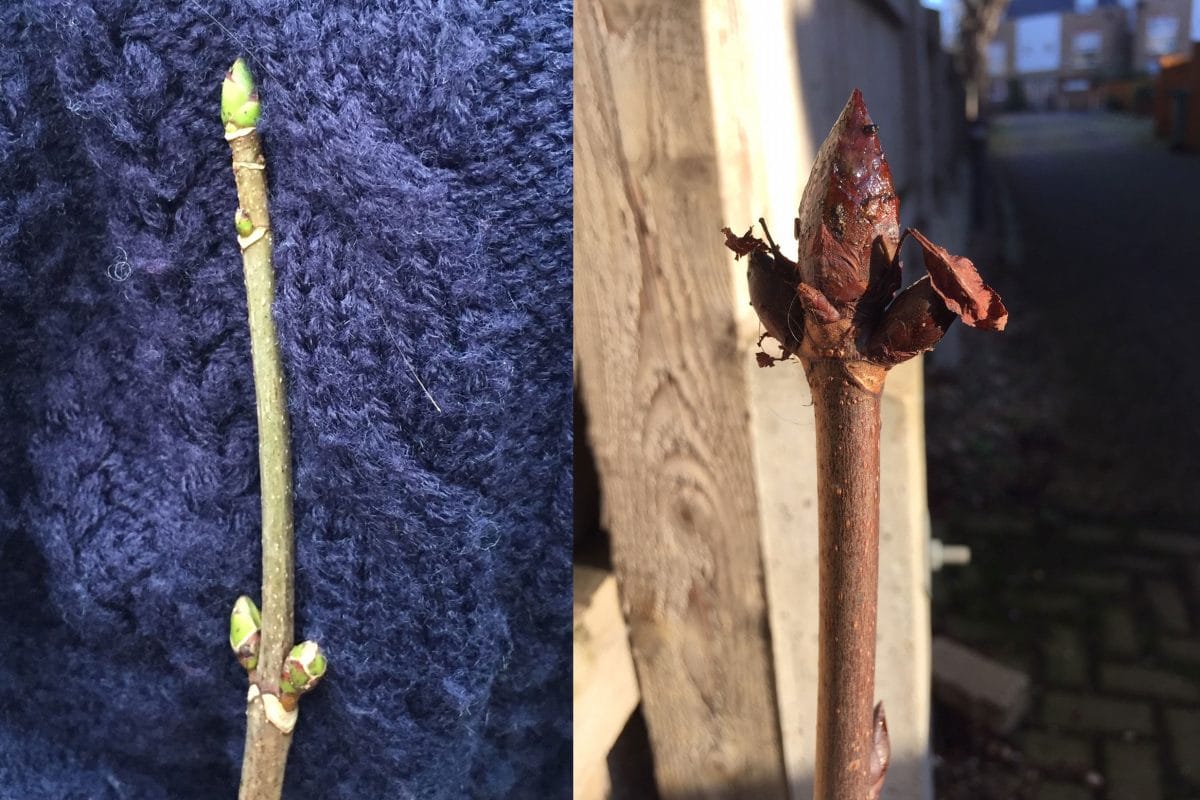

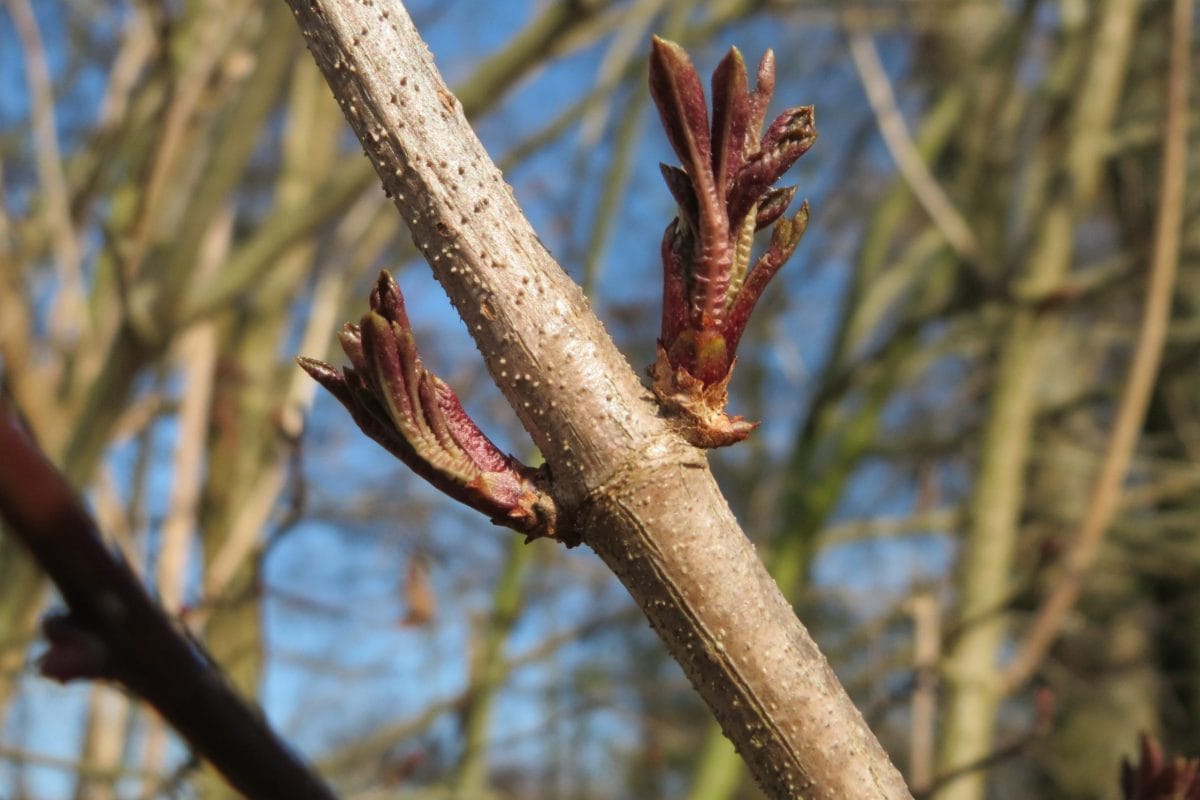

The first letter of the names of these trees spells out the word MASHED. You have to remember that M stands for “maple and sycamore” and S stands for “spindle”.
So if you find paired buds on a tree you know you are dealing with one of these six. But which of the six is it? Look at the buds more closely:
- Maple (and sycamore – not pictured) have green buds
- Horse chestnut has fat brown (chestnut-coloured in fact) sticky buds
- Ash has smart charcoal-like matt black buds
- Elder has buds that are ragged and messy looking, often with leaves showing through the bud scales.
- Dogwood has dark brown bristly buds emerging from purplish red twigs
- Spindle (not pictured) has green buds, and characteristic vivid pink fruits
Tree bark
What about all those dozens of other trees with unpaired (or alternate buds)? Start by looking at the bark.
- London Plane has that classic peeling bark
- Oak, both sessile and pedunculate, has deeply vertically fissured bark
- Hawthorn (Crataegus monogyna) bark is grey, vertically fissured with narrow ridges. So yes, I know that sounds a bit like oak and it is, but hawthorns are much, much smaller than oak.
- Beech (Fagus sylvatica) has smooth, grey bark
- Silver birch (Betula pendula) has ‘silver birchy’ bark
- Hornbeam (Carpinus betulus) has grey smoothish twisted ’muscle-y’ looking bark
- Yew (Taxus baccata) has lovely red bark (and its evergreen, so you can see its droopy leaves even in winter)
That’s more than enough for now! Scroll through the images below for examples:

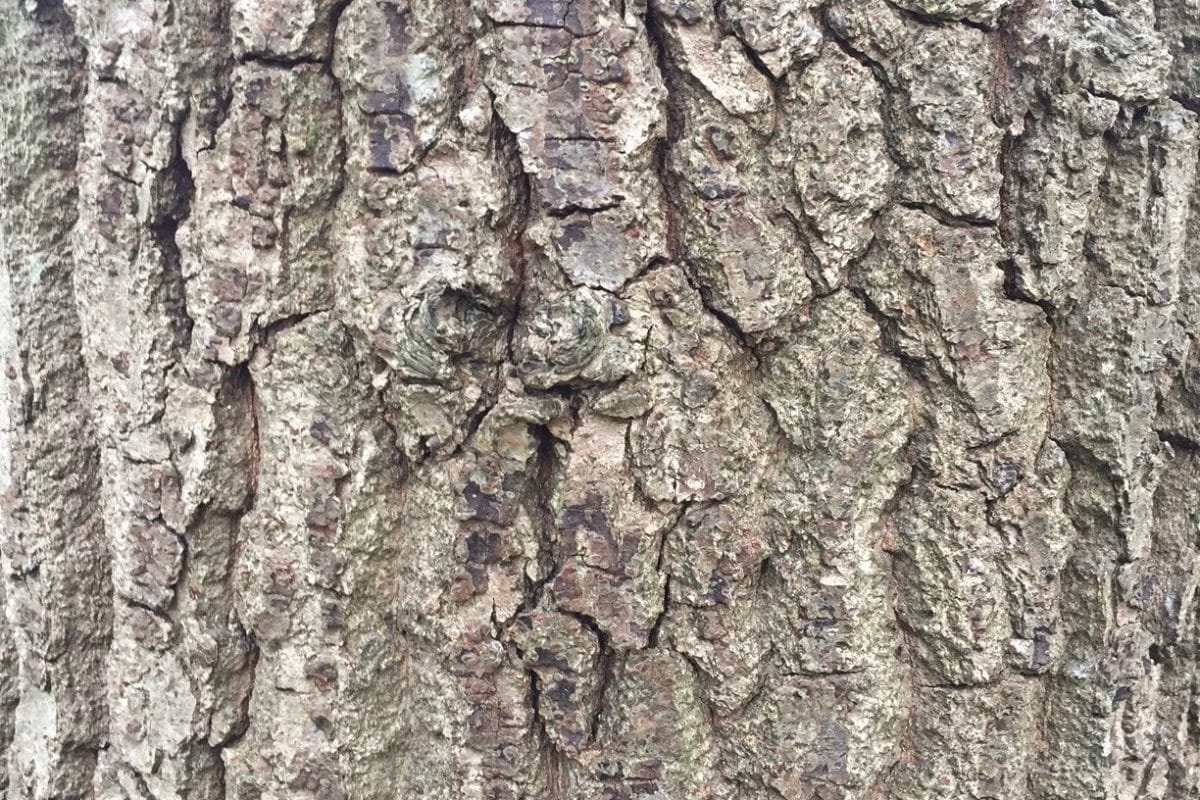
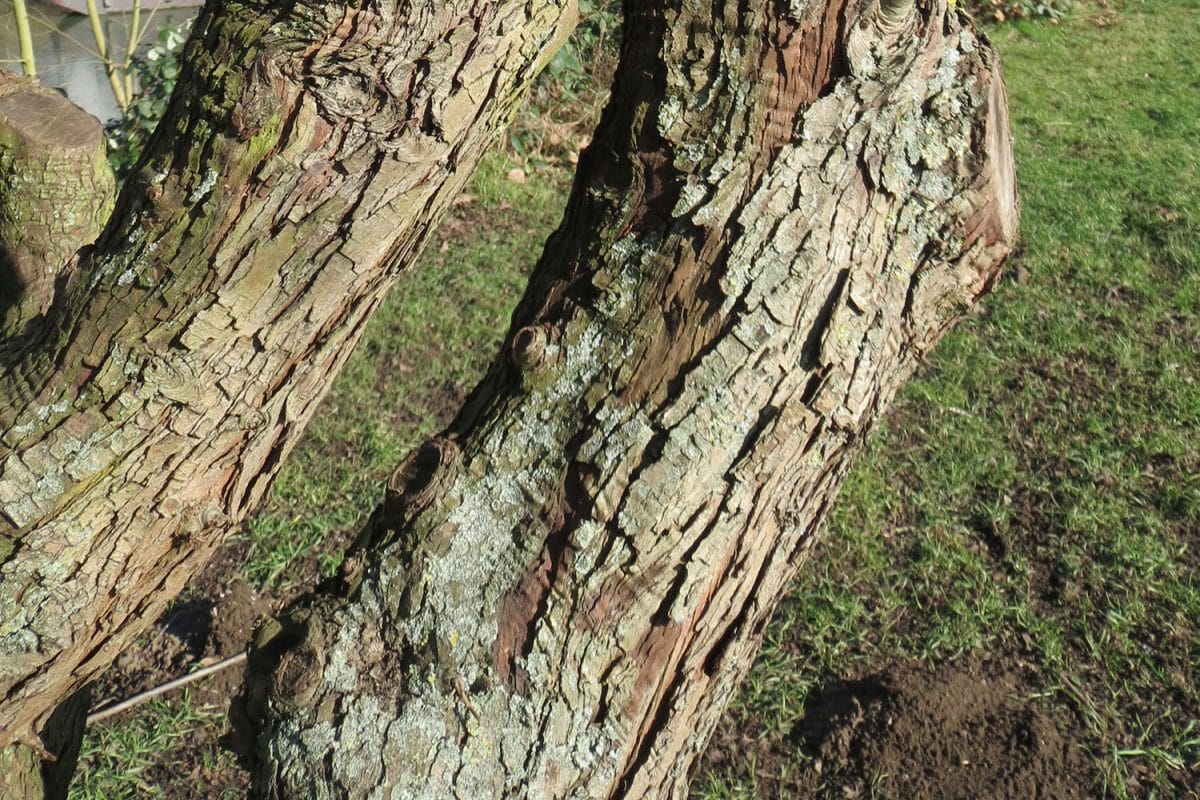

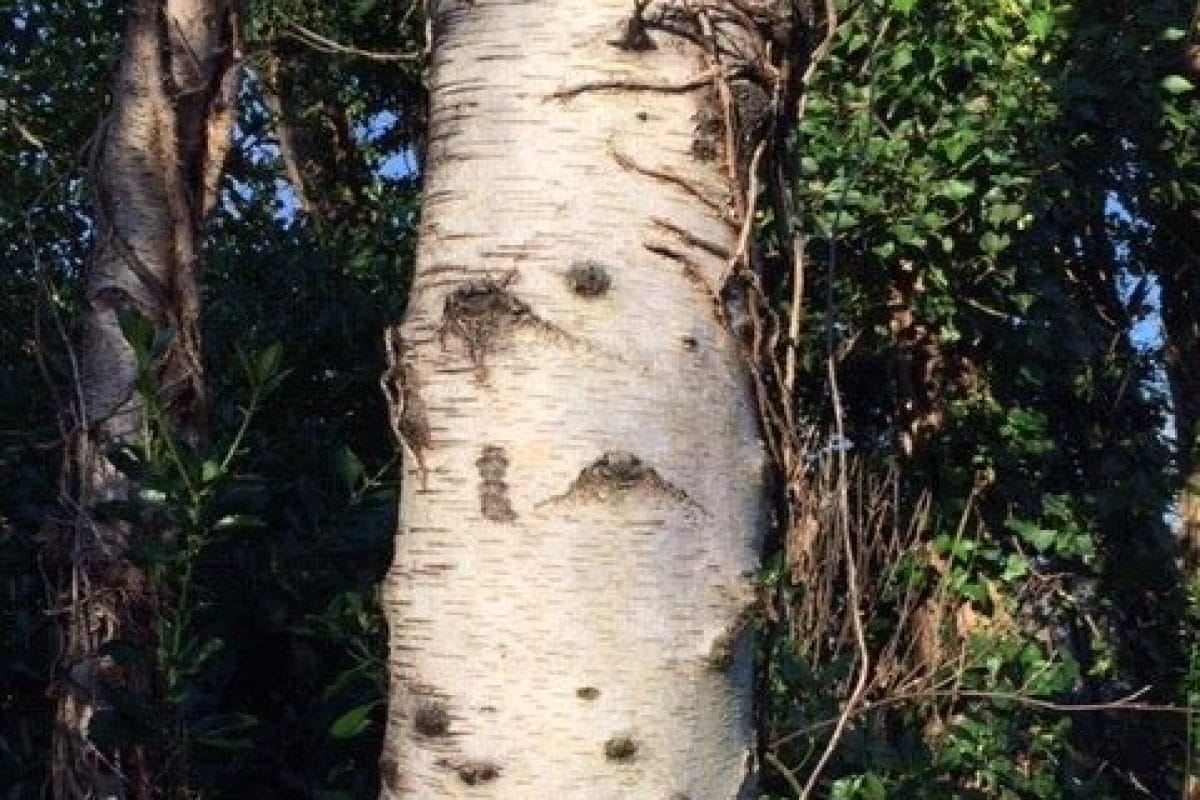
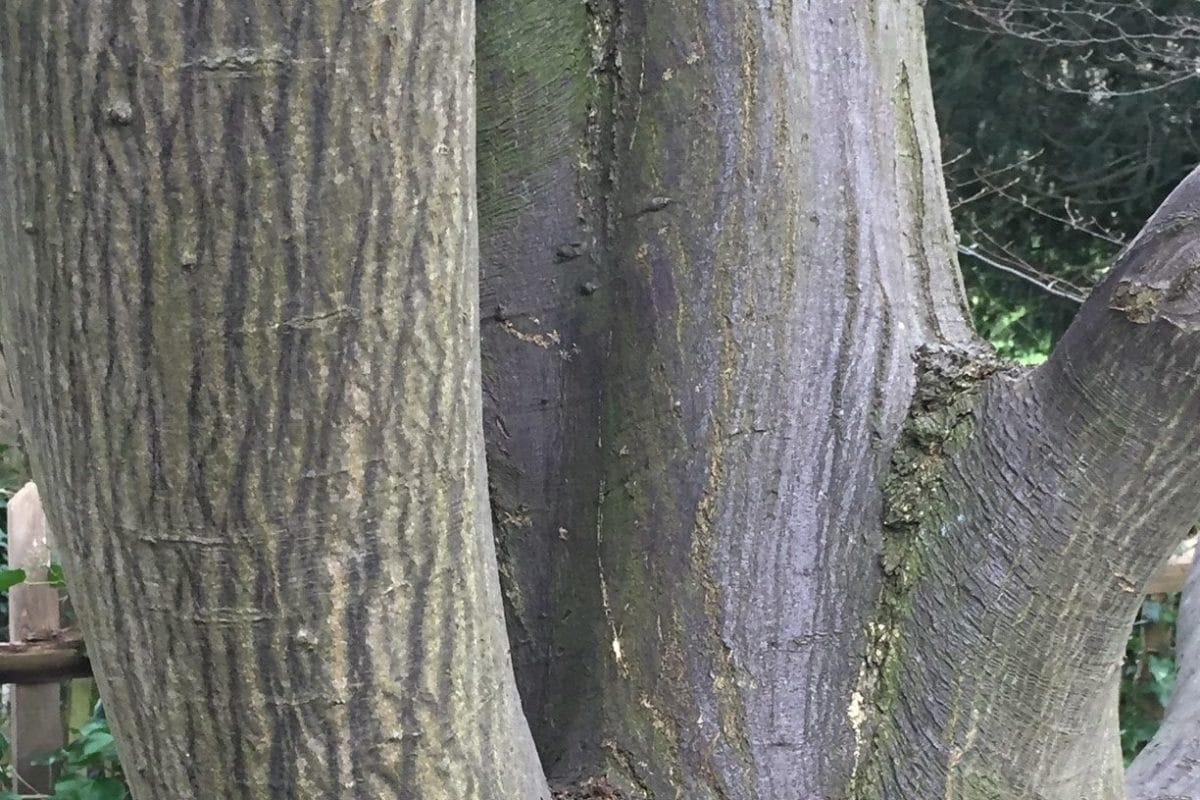
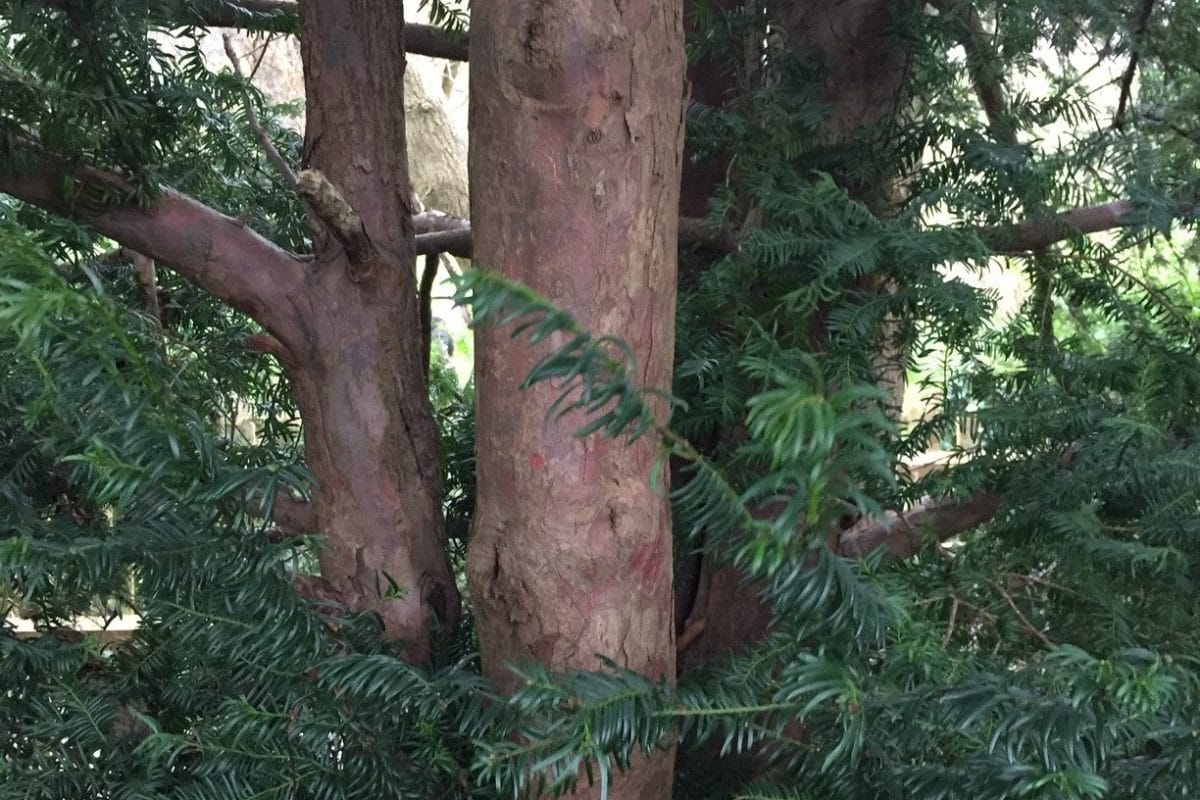
Using only the buds, and the bark, you can now identify a decent handful of the common trees you will see out and about.
Take it slowly and learn in small chunks so you don’t get overwhelmed. Start with your handful of common species, and learn one or two key features of each.
Get out and practice, and consolidate your knowledge by looking at another short video about different trees or reading a bit of a book. Learn small chunks of knowledge, a few minutes at a time, interspersed with frequent trips out to look at the real thing, and then quickly hit the book again when you get back to make sure what you’ve learned stays in.
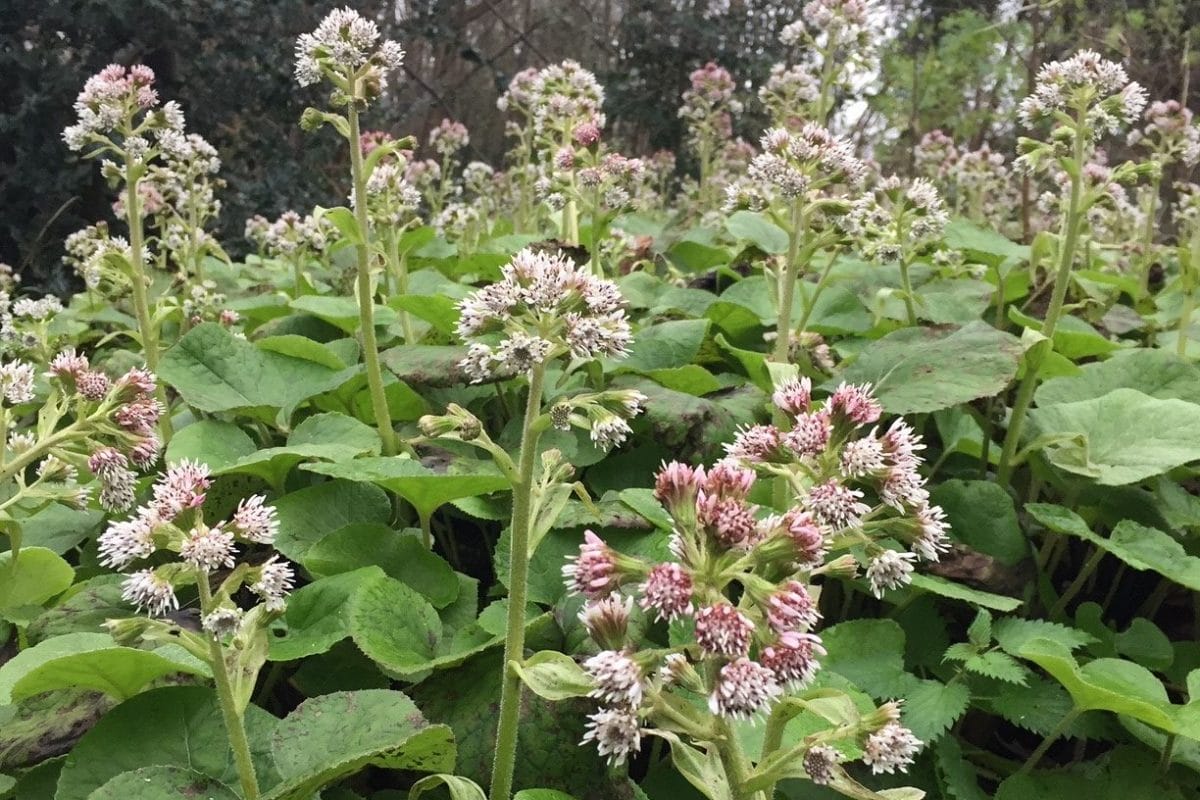
I’ll end with a photo of the winter heliotrope (Petastises fragrans) which is looking and smelling gorgeous on the Nature Trail this year. The scent is an extraordinary synthetic almond aroma.
For more on this amazing plant please see my blog from 2020, Sardinian sun-seekers and cold bees.
Enjoy the Nature Trail!
Other references (not linked to in text):
Woodland Trust: The tree and woodland charity. They have good simple tree descriptions on their website and a smartphone app which, although it uses a key, is pretty easy to use and helps you to narrow down your options for those tricky trees.
Oldham, J, & Roberts, C. The tree name trail. FSC, 2nd Edn, 2008. A very good value fold-out laminated key focusing on the common “native” trees. You can buy it on the FSC website.
Cohu, W. Out of the Woods: the armchair guide to trees. Short Books, London, 2015. A book to inspire you to get out and learn the names of our trees. An easy read with gorgeous illustrations. Not a field guide, although if you learn everything in this book you will be well away.
Johnson, O & More, D. Collins British Tree Guide, Harper Collins, 2015. Lovely illustrations and portable. The same authors do a Collins Tree Guide which is even more comprehensive, but potentially confusing for beginners.
Thank you to Rachel Dowse, former Project Officer for London Wildlife Trust at Sydenham Hill Wood, who introduced me to the MASHED acronym.


